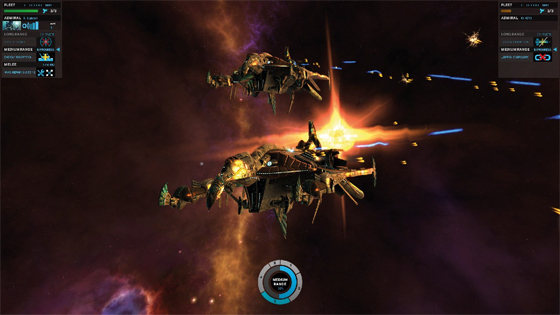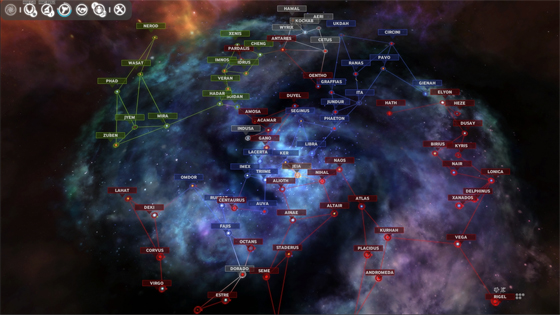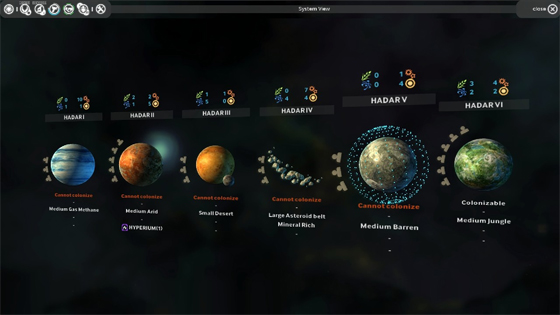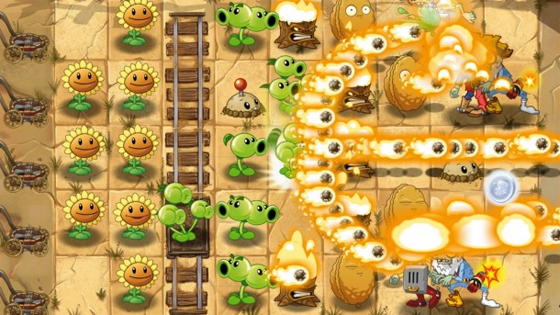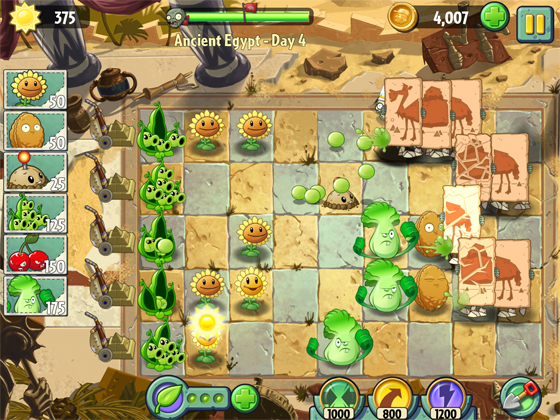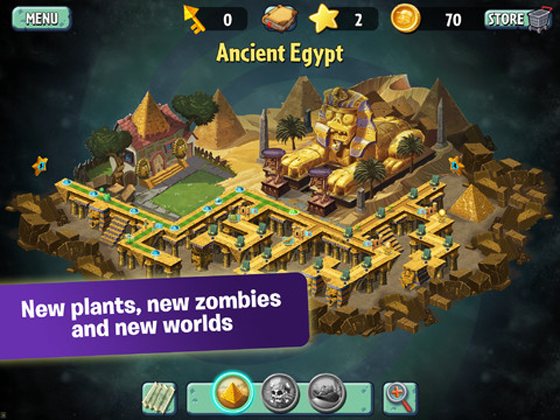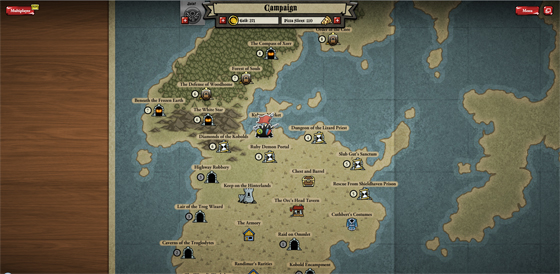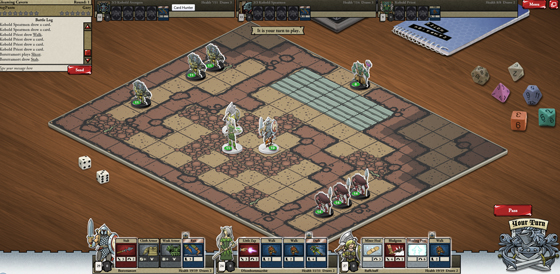It’s great to get a good turnout of 5punkers on a gaming night, and we’re regularly getting around eight these days. The problem with that is finding a game which all eight of us can play, exacerbated by our cat herd mentality and short attention spans. Free-to-play games come into their own under these circumstances, as we can all have a go together without necessarily having to commit.
Author Archives: Dog Pants
Friday Diary: Pork Calamari
Last night’s Frigames introduced no new games – a free weekend for Chivalry gave us the chance to introduce it to a few low-G medieval combat virgins, and after that we defaulted to more Dota 2. That’s good though, it gives people chance to catch up with what’s going on, especially since not everyone can make Frigames all the time.
Friday Diary: Terribly Good
5punk has a long history of loving terrible games. Games which are broken, buggy and ridiculous. I think I’ve mentioned that before. We love them because they’re perfect for comedy, and they’re even funnier when you have a deadly serious community playing them. Last night we found such a game.
Posted in General Gaming
Tagged bears, Broken, Dota 2, Fire Extinguisher, Propane Tanks, Tactical Intervention
Friday Diary: Lady Bits
Last night’s gaming proved to be very much an archetype of 5punky gaming; fraught with disaster and conversations for which I daren’t google a title image. We had a good showing though, and while the gaming produced nothing particularly groundbreaking it gives me an excuse to set the background noise level from which the other shenanigans that appear here can be based.
Posted in General Gaming
Tagged bears, Chivalry, Dota 2, Lady Bits, Path of Exile, puns, Ursa
Friday Diary: Cock Snorkeling
An ill-prepared evening left us mostly playing Dota 2 last night, but I’m not going to run away with evangelising over a game half the people who read this probably don’t like. I’ll save that for another week. We had a fine turnout though, and the witty and sophisticated repartee was present as always. As can be seen by the title of this week’s diary.
Posted in General Gaming
Tagged Battlefield 3, cock snorkeling, DLC, Dota 2, Premium Accounts, Slark
The Friday Diary: Wuuuuaaaaaaaarrrrrrrgh!
This friday’s gaming was relatively quiet, around six of us playing over the course of the night. You may be able to predict how the night ends from the trend of previous weeks, but we were a little more varied in the run-up last night. I’m glad, because it’s given me the chance to write about the most recent addition to the list of 5punky games.
Posted in General Gaming
Tagged Bumout, Burnout Paradise, Chivalry, Cthulhu, Dinosaur, Dota 2, Screaming
Endless Space
The title ‘Endless Space’ is a misnomer which ever way you look at it; space in this game is most definitely finite, but it actually refers to the name of an ancient race of aliens who left loads of tech lying about, as ancient spacefaring races do. They’re not endless either though, because they’re all dead.
The game’s a 4x space thing of which we’ve seen before in the likes of Sins of a Solar Empire, AI Wars, Space Empires, and so on. The genius of this one, which for me makes it stand out, is its accessibility. The UI is great, giving you every option you need only a click or two away for the most part. Ship design takes a little getting the hang of, but it’s actually very simple once you sit and look at it. The tech trees let you zoom in to see details of what each tech unlocks. The AI is pretty passive but builds at a hefty speed, so even when I’ve lost a game I never feel (or more accurately know) I’m doing too badly until someone else wins. Makes a nice change from getting gang-invaded by huge fleets like I do in every other game.
Which brings me to the contentious point. Curious as to why I had niggling memories of this getting lukewarm reviews I dug out a PCG from around November. They praised most of the things I liked, but slated the combat system. It’s odd, I’ll give them that. Your fleets are limited by command points, and they’re pretty stingy. No vast armadas here, maybe half a dozen ships per fleet. You fight by picking ‘cards’ (or orders as I prefer to think of them, since videogames have no requirement for bits of card) for each of the three phases of the engagement; long, medium and melee range. Each weapon type works optimally at a certain range, most cards will benefit a certain range or weapon more than others, but crucially, each card will also counter a certain other card type. This makes the engagement a perpetual circle of rock-paper-scissors and trying to second guess and double bluff your opponent. Do you use weapon overclock to increase your kinetic damage at melee range? He’ll expect that so he might counter with defensive shields which will negate your bonus and give him extra defence. So do you use sabotage instead, which will give you the edge by reducing his defences, but knowing that if he goes for weapon overclock like you were originally going to he’ll do a lot of damage? You make your choices and take your chances.The problem PCG had was that the control you have in-battle is limited to switching cards out before the phase starts. Other than that you’re just watching it unfold in pretty streams of lasers and missiles. Personally I like that, because I hate micromanaging combat and I’m shit at it. Others may hate it though.
The best summary I can make is that it is to space 4x what Civ V was to the Civ series. It’s smooth and user friendly, without losing complexity, but some will feel like it’s dumbed down.
Posted in Review
Plants Vs Zombies 2: It’s About Time
It’s only out on ‘mobile devices’ at the moment, which I’ve found to mean Apple stuff only as I can’t find it for Android, but I downloaded it onto my iPad and had a go anyway. PC version will follow, I’ll play it there too if it’s on Steam (it’s a collection OCD thing), but I doubt there’ll be a lot of difference.
The first thing that struck me is that it’s very much more of the same. The graphical style is a little more hand drawn rather than cartoon – only barely noticeable – and the music is a little more high budget (by which I mean there are more instruments used), but the tutorial is identical to the original game. That’s not a bad thing, the premise is a great one and I’ve played something like a hundred hours of it. The differences are predictable in some cases (the good ones), and not so much in others (unless you’re aware that EA are publishing it, and that EA have sworn to monetise the shit out of everything they sell).
So lets start with the familiar goodness. You drop plants down to stop zombies getting into your house and eating your brains. You do this by collecting sun to buy more plants. There are new plants, new zombies, new locations. That’s all expected, and they’re all well and good. I should qualify what I’m writing at this point by saying I’ve only played the first dozen or so levels, all of which have been in Egypt. The premise is nice, it’s no better or worse than the original for it, and that’s a pretty good compliment.
Next up is the stuff I’m suspicious of. You get all manner of power ups in PvZ2. I don’t like power ups, because they’re an excuse to sell them to chumps for real money. You get a stack of Plant Food, which supes up one plant for a few seconds. The effect varies by plant, and are quite interesting, and they drop when you kill certain zombies. They add another layer of complexity I don’t think the game needs, but they pretty much act as an ‘oh shit’ button. So that’s not too bad. Then there are the power ups, of which there are three. They wipe out large swathes of zombies with finger movements – one snips their heads off, one picks them up and chucks them, one zaps them with a continuous lightning bolt. They’re as overpowered as they sound, and you use them by paying for them with in-game gold. Ah, now that sounds familiar – paying for game-affecting, one-shot buffs. Lets keep that in mind.
The rest of the changes look to be outside the game itself. This time you have a few branched progress lines, side-quests in which you can earn new plants. You have to unlock those with keys found in game though. After the first one, for reasons that aren’t explained, you need to use more than one key to unlock them. Of course if you don’t have enough, you can unlock them with real cashmoney. Then there’s the shop. If you remember from the original, you could use your gold to buy new plants, extra slots, other useful stuff. You can do that here, except you use real cashmoney again.
The cash grab is mostly unnecessary fortunately. The grossly powerful power-ups can also be bought with in-game gold, of which there’s nothing else to use it on, but really if you’re half decent at the game you won’t need them at all. The keys can be ground out by repeating levels, which offer several varieties of replay with limitations such as limiting your sun or number of plants, so that’s not really a chore. The only real thing you need to spend money on are the extra plants.
Herein lies my main concern. The extra plants are really essential plants from the first game. The Snow Pea, the Jalapeno, the Imitater. It makes up with other plants, but it still feels cynical. On top of that, they’ve removed the upgrade plants – the twin sunflowers and rapid-fire peashooters are now just normal plants. It’s a refreshing challenge to beat a level without taking normal sunflowers, just twins, but it also feels dumbed down. It’s all down to the monetisation of the in-game currency, and that’s also removed the plant growing metagame, the bonus levels, the tree-growing. Okay, the last one sucked anyway. But it feels like they’ve put less thought into it.
Predictably then, it’s not as good as the first game. It’s not bad either, just a bigger but shallower copy with some slightly cynical marketing. Easily worth the asking price though.
Posted in Review
Card Hunter
You’ve probably never heard of Card Hunter (unless you’re reading this in the future and it’s become really successful). That’s understandable, it’s a turn based browser RPG, which is hardly a PR dream. The beauty of it doesn’t come across in the screenshots though, it’s in the ‘just one more dungeon’ compulsion which is present in the best turn based games. Which isn’t to say this is comparable to the likes of XCOM or Civilization, but that moreishness is still there.
The theme of Card Hunters is very tongue in cheek, lampooning the stereotype of the Dungeons and Dragons geek. Personally I can take the fluff or leave it – nerdy GMs besotted with the pizza girl, self righteous alpha-nerds leering at the younger players, frilly pseudo-medieval phrases. It’s all bollocks, but it’s not intrusive. It does, however, lend itself nicely to the graphics. Card pieces on a board surrounded the paraphernalia of roleplaying club meets make for a nice, clean interface with amusingly camp characters.
Enough about the pretty interface though. The game is, as mentioned earlier, a turn based RPG. When I say RPG I mean it in the videogame sense – there’s no dialogue other than the click-through GM spiel, you just get thrown into an arena with a bunch of things to kill. In this case RPG is shorthand for ‘levels and random loot drops’ rather than ‘Roleplaying.’ Doesn’t really matter though, the combat is entertaining enough to make the game. And what a funny old thing that combat is. Instead of action points or a similar analogue, your party members are given a hand of cards. Each card represents one of the wide range of actions they can make – moving, attacking, casting spells – as well as passive stuff like armour and effects.
The cards thing is off-putting to me normally. They always seem like an unnecessary abstract and remind me of cash treadmill TCGs. In the case of Card Hunter though, I like the way it works. You don’t choose your deck, instead your equipment is composed of a handful of cards and your deck is the sum of that equipment. It takes the micromanagement out, but retains the random nature of drawing your skills and abilities which add unpredictability to the tactics.
The biggest stumbling block to most people is going to be the price model. It’s another free-to-play game, with a subscription which lets you unlock the one special bit of loot after each adventure and opens up ‘treasure hunt’ missions which, again, offer better gear. On top of that there’s the increasingly common option to purchase chests with random loot, and of course different card characters to play. It’s not strictly necessary, everything bar the cosmetics is available for free, but it’s that thing that makes you feel like a second class citizen.
The game is enjoyable though, which is the bit we’re all interested in. It might suffer from longevity problems once the single player campaign is complete, but multiplayer may alleviate that, and I won’t be surprised to see additional dungeons released (paid for, presumably). At least, as a free-to-play game, you can go and check it out for yourself.
Posted in Review
Wargame: European Escalation
Introduction
Wargame: European Escalation is a real-time strategy game based around hypothetical Cold War conflicts in the period of 1975-1985. The name alludes to the fact that the game is designed to be more like tabletop wargames than fast paced, resource based RTS games like Starcraft 2. Currently on sale with 40% off on Steam, the game normally retails at £30. At the time of review I’ve played 4 hours (according to Steam), and haven’t sampled the multiplayer yet. This review is my initial thoughts.
Gameplay
The wargame aspect of this RTS is embodied by a more realistic approach to the battlefield. Hundreds of units from eight nations are present, modelled and playable, with a fairly easy-going unlock system giving you access to more as you play. These units are either pre-allocated in reasonably accurate orders of battle, or , in the case of multiplayer and skirmish games, made up of ‘decks’ created before play. In-game there’s no base management, instead you are given points for achieving objectives which can be used to call in reinforcements from off-table.These reinforcements must enter through specific zones which need to be controlled by command vehicles, adding another tactical consideration. In the field units can be resupplied by logistic units and forward operating bases. This is important, and keeping your lines of supply clear is a consideration, as units have finite amounts of ammunition and fuel with which to operate. This isn’t as restrictive as it sounds, most units will be able to fight an average length battle without running out of either, but probing scouts constantly in motion can find themselves needing a refill. Vehicles and troops are to scale and move at a realistic pace (thank goodness for APCs in the latter case), and it seems to be modelling damage and accuracy rather than just allocating hit points. Tanks occasionally throw tracks in rough terrain, and hits can cause temporary minor malfunctions. This means you can never be quite sure how an encounter will turn out, although fluke shots are rare. Nasty surprises are more tactical, usually. Tanks crashing through woods unsupported and without scouts fare badly when bumping into LAW wielding infantry. The sight of a platoon of your MBTs exploding in quick succession from a volley of rockets is brutal and crushing. Most combat, though, is long ranged tank-on-tank action. All this adds up to an experience which is slower placed and with more emphasis on unit placement and tactics than economies and actions per minute, and people who enjoy the tactical planning and response of Total War, Combat Mission, or apparently RUSE (I didn’t play that one) should enjoy this.

In-game screenshot, zoomed out to show the reinforcement zones.
Sights and Sounds
The graphics aren’t going to make a decent gaming rig sweat. They’re as functional and basic as one would expect from a simulator-style game, although the level of detail when zoomed right in is quite impressive – crops are flattened by tanks as they roll through fields, fires spread from exploding ammunition, and vehicle models wouldn’t have looked out of place in Battlefield 2. Sounds are equally utilitarian, limited mostly to the rattling of machineguns and the screen-shaking thump of AT rounds being exchanged. I can’t really think how much more they could have added without it being over the top, apart from maybe a period soundtrack (I’d recommend Def Leppard’s Hysteria by the way for anyone wanting background music). Graphically some destructible scenery wouldn’t have gone amiss, but since urban fighting is pretty rare it’s not likely to be a noticeable absence.

A column of reinforcements approach the battlefield; units with fast move orders will stick to roads for speed.
Stuff that sucks
RTS veterans will find a number of features conspicuous by their absence. The base building and economy aspect is the obvious one, and if you like your tank rushes then this game is not for you. Less obvious is the lack of basic features like movement waypoints and assigning groups to hotkeys. They aren’t really essential as the game is paced slow enough to be able to micromanage your units, but their inclusion could have only enhanced the game. Unless of course it does do that and I don’t know how yet, which brings me to another mild criticism; the tutorial. It isn’t unusual for tutorials to be less than great, and its only real fault is that it doesn’t feel very comprehensive. Even so, it can make the game feel quite daunting when your only pointers are a few quick popup boxes. Some may also find a paradox of having a huge and potentially baffling amount of choice, which add up to lots of similar units with slightly different stats. As such there’s not much depth despite the breadth. This could have been fixed by off table support like paradrops of troops or supplies, off-table artillery, and air strikes.

Armoured cars picking their way through the wreckage of a T34/85 platoon get a hard time from my Leopard MBTs across the river.
Conclusion
Wargame is a refreshingly cerebral RTS which relies on tactical thinking more than click-skill. Those looking for a semi-simulator, large scale battle game could do far worse than look this up. The current retail price is maybe a bit high for people who don’t generally play RTS games, but if you feel overwhelmed by the frantic pace and hardcore skills of Starcraft 2 and yet would like to try your hand at being an armchair general then this is certainly worth considering when the sales come around. Those who know what they like and think they might like this should take the plunge now (and play some multiplayer with me).
Posted in Review







